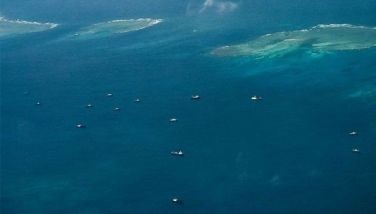Government ready for floods
MANILA, Philippines – Malacañang assured the public yesterday that the government is undertaking measures to prevent a repeat of the massive flooding that caught people unprepared last year when tropical storm “Ondoy” dumped torrential rains, submerging Metro Manila and nearby provinces.
Today is the first anniversary of the deadly onslaught of the tropical storm that killed hundreds and damaged billions in agricultural produce.
“The country suffered damages and many of our countrymen died because of Ondoy. But the government is doing all it can to avoid a repeat of such tragedy,” deputy presidential spokesperson Abigail Valte said in an interview with state-owned radio station dzRB.
She said the Department of Science and Technology and state weather bureau Philippine Atmospheric Geophysical and Astronomical Services Administration (Pagasa) have improved their forecasting capabilities to provide hourly updates on the weather condition as well as on water level in water systems along Metro Manila.
Before, Pagasa could only release weather updates every six hours.
Valte said the Metro Manila Development Authority (MMDA) is now drafting an integrated flood control plan and is carrying out dredging projects in waterways.
Seventeen mayors have also signed the estero declaration wherein local government units in Metro Manila would coordinate in implementing anti-littering ordinances and in cleaning creeks.
In a separate interview, Office of Civil Defense Administrator Benito Ramos said they have conducted disaster response trainings in communities to help them cope with natural disasters.
“We have a strategic national action plan. We have programs for mitigation, preparedness, response and relief and recovery. The government has done a lot a year after Ondoy (ravaged the country),” Ramos said. “We conducted preparedness and mitigation drills, and seminars to increase the awareness of people.”
Data from the National Disaster Risk Reduction and Management Council showed that Ondoy, which hit the country on Sept. 26, 2009, left 464 people dead and 529 others injured.
Agriculture and infrastructure damage caused by the storm reached P10.97 billion.
The storm affected 12 regions and 4,901,234 people.
No storm like Ondoy this year
Pagasa weather forecaster Joel Jesusa said it is unlikely that a tropical storm as strong as Ondoy would visit the country this year.
The country is expected to experience only isolated rain showers or thunderstorms mostly in the afternoon or evening.
Jesusa said there is no typhoon or low-pressure area in sight that could generate the same volume of rainfall.
“The idea that the country would experience another Ondoy-like experience today is far-fetched. There is no storm in sight unlike last year,” he said. “There is not even a low-pressure area that would induce the southwest monsoon.”
The weather bureau said that in the next 24 hours, there would be a ridge of high pressure area extending across Luzon.
The entire country would have partly cloudy to at times cloudy skies with isolated rain showers or thunderstorms mostly in the afternoon or evening.
Light to moderate winds blowing from the northeast would prevail over Luzon and from the east to northeast over the rest of the country.
Coastal waters throughout the archipelago are expected to be slight to moderate.
NDCC ready for disaster response
Defense Secretary and chairman of the National Disaster Coordinating Council (NDCC) Voltaire Gazmin said the agency has been stepping up its preparations for disaster response to include practical and scientific means to reduce the impact of natural calamities.
“As chairman of the National Disaster Coordinating Council, I am overseeing the preparations for any disaster that may strike us anytime, anywhere across the country – may it be another storm, flooding, volcanic eruption or an earthquake,” Gazmin said. “Tragedies choose no one. But these tragedies teach us lessons that we should not take for granted.”
He said the agency is now implementing the mechanisms of the Disaster Risk Management program, which focuses on disaster preparedness rather than relief response.
These preparations include conducting regular disaster mitigating seminars, identifying evacuation centers, planning the security of food and non-food items in disaster prone areas, and upgrading equipment for disaster response.
Flood prone areas are also being mapped out.
He said the government’s resources are enough to meet the minimum requirements but because of the unpredictability of natural calamities, there might not be enough to provide relief within the first few hours of a calamity.
“The disaster risk management approach must also entail everyone’s participation. We can all make the first small step in improving our chances to overcome the next natural disaster that may strike us. We can all make the difference, and it all starts with every one of us doing his share in mitigating the effects of a disaster,” Gazmin said.
He advises the public that in the event of a natural disaster, priority should be given to saving lives instead of property. With Evelyn Macairan, Jaime Laude
- Latest




























